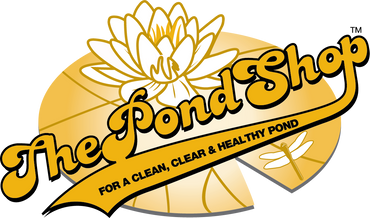Water Shield

Water Shield is a native floating-leaved plant with moderately sized football shaped leaves. The tops of the leaves are leathery and green during the growing season, changing to brilliant yellows, oranges and reds in the fall. The stems are attached to the center of the leaves; they have a clear, jelly-like coating on the stems and on the underside of each leaf. The flowers are maroon to purple, less than two inches wide and produced on stems that emerge just above the water surface from buried rhizomes. Water Shield thrives in shallow, slow moving waters with sediments that are rich in nutrients. Water shield provides shade and cover for fish and habitants for frogs and other invertebrates. A number of animals including ducks feed on water shield. Despite these benefits, sometimes it is necessary to control their expansion to avoid mats from becoming a nuisance and impairing lake access, and recreational activities.
Prevention
Water shield reproduces by Insects or wind cross-pollinating the flowers. Once the flowers are pollinated they fold up and submerge. Fruits develop underwater enclosed in the petals and sepals. Each fruit carries one or two seeds each. This plant can quickly take over shallow ponds and lakes if not managed. Early intervention to regain control of infested areas will help avoid large invasions.
Biological Control
Beneficial bacterial products and enzymes such as PZ900 feed on nutrients in the water making them unavailable for plant growth. Reducing nutrients can help prevent invasion.
Physical/Mechanical Control
In order to restore the function of waterways or swimming areas mechanical removal is a good option. However, in large established infestation, mature floating mats can be thick, heavy and difficult to clear away. Water shield plants will regrow from seeds and leftover roots, long term monitoring and follow-up will be required to avoid future reinvasion. Physical removal in conjunction with chemical control will maximize success.
Chemical Control
When used carefully according to the label instruction, aquatic herbicides can be safe and effective management tools. The products that have been successful in treating water shield individually or in combination are Clipper, Shore-Klear, Sonar AS and Sonar RTU. A nonionic surfactant Cygnet Plus should be mixed in solution with herbicides when plants are treated.
Clipper is a broad spectrum, fast acting contact algaecide/herbicide. It comes in a water dispersible granule that mixes with water to be sprayed or pour. Clipper should be applied to actively growing plants or algal blooms.
Shore-Klear is a systemic herbicide that will translocate down into the root systems killing the plant.
Sonar A.S. is long acting systemic herbicide ideal for water bodies with minimal flow. Simply mix Sonar A.S. with water and spray throughout the surface of the water or pour in different spots around the pond. Sonar A.S. does not have water use restrictions.
Sonar RTU is a long acting, systemic, easy to use herbicide. Sonar RTU does not require mixing, simply open the bottle and treat from the shoreline.
Cygnet Plus is a nonionic wetting agent, sticker, activator and penetrant all in one. Cygnet Plus increases the effectiveness of herbicides uptake into the plant tissue.
